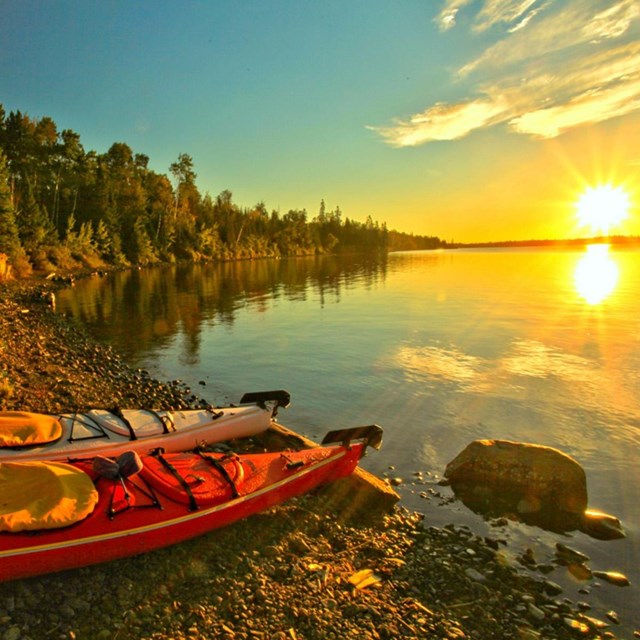
Image designed by the National Park Service
Ready for vacation? It’s never too early to start planning. Park experiences can be as diverse as the 400+ national parks themselves. A little trip planning can ensure that your surprises are mostly happy ones. Put on your imaginary park ranger hat and begin planning your best national park adventure.
Park rangers have shared their top ten tips and things to know in lists below. You can also use #PlanLikeAParkRanger to find more tips from park rangers on social media or to share your vacation successes!
Pack Your Park Ranger Vacation Planning Bag
Don’t leave for your national park vacation without these park ranger tools:
- Park websites
- NPS App
- Trip planning guide
- Follow us on social media or use #PlanLikeAParkRanger
Top 10 Tips by Park Rangers
Park rangers share insider tips for making the most out of national park adventures. These are the most common tips and things to know about planning your vacation. Also check for lists for specific parks you plan on visiting.

1. Don’t miss the good stuff.
With more than 400 national parks across all 50 states and many US territories, we love discovering places not as well known that offer the beauty of nature and the power of history—only with fewer crowds and lines.
Search for parks for a park by topic, activity, or even close to you in your state
2. Make a plan...and a backup plan.
For us, a park visit begins at home with a trip to NPS.gov. Park websites have ideas about where to go, what to see, and what to do, and most important, what we need to include in our planning. Flexibility and a backup plan are key, too, in case of changing weather conditions, road closures, etc.
Use a trip planning guide to help plan your trip.
3. Use the NPS app.
We nerd out over our own app—it’s very cool. It offers great tools like interactive maps, tours, accessibility information, and more. You can easily find parks closest to you and you can even access it offline if you plan ahead. And we’re adding new content every day!
One app, every park at your fingertips.
4. Reservations may be needed.
We heart reservations. (Nope, we don’t get in for free.) Many campgrounds and lodges in and around well-known parks book quickly during peak seasons. Having a reservation guarantees we won’t arrive at a park only to find that we need an entrance reservation, there’s no place to sleep, or a popular trail is closed.
Check the park website to see if reservations are needed. Many reservations are made on recreation.gov.
5. Keep safety in the picture.
We love to take photos. (Have you seen our Instagram?) But we like surviving the experience, too. So we’re careful to take pics where it is safe. Some popular trails and views may be especially crowded this year, so an unobstructed photo might require a bit of a wait.
Get great tips for photography in parks.
6. Ask a ranger.
Have a question? Ask a ranger. (Yep, we ask other rangers about visiting their parks.) We’re always here to help. We can answer questions, share park stories (we’re always happy to point you to the nearest restroom), and we can let you know what activities are available.
7. Don’t pet the fluffy cows.
JK, but bison can weigh up to 2,000 pounds and run up to 35 mph—and they can really hurt you. We can’t run that fast and are pretty sure you can’t either. Keep your distance from wild animals, never feed the wildlife, and when taking pictures, use your zoom and give them room. #SafeSelfie
Find super ideas for enjoying park wildlife , such as what equipment to bring and how to protect yourself and those cool critters.
8. Are you ruffing it?
This one’s for the dogs—we love ours. (Have you seen the Denali puppies?) Many parks allow pets on leashes and in campgrounds; some even have kennels. But sometimes these furry friends are best left at home. Discover what you can (and can’t) do with your pet and follow the B.A.R.K. principles.
Yep, your pet can be a BARK Ranger (See what we did there?)
9. Leave only footprints.
We know that each of us—rangers, volunteers, visitors, everyone—plays a vital role in protecting YOUR national parks. Whether it’s carrying out what we brought in (including our pooch’s...well...you know), leaving the spots we visit just as we found them, or staying on the trail, we’re careful to respect these incredible places.
Learn the seven principles of Leave No Trace.
10. Expand your options and discover something new.
A lot of national parks are popular places. Broaden your horizons to find other gems that offer similar experiences or a chance to try something new. If your favorite park is pretty packed this time of year, maybe look at other nearby national and state parks too. Can't make it all the way across the country this year? There may be parks closer to home than you realize.
Did you know the NPS App will show you the nearest parks to you wherever you are? You can also search for parks on NPS.gov.
Top 10 Tips by Park
Visiting a specific park? Rangers in parks across the country have shared their top 10 tips and things to know when visiting their park.
Featured Parks and Places
-
 Ten Alternatives
Ten AlternativesConsider exploring somewhere similar and discover something new! This list offers hidden gem alternatives to popular national parks.
-
 CALIFORNIARedwood National & State Parks
CALIFORNIARedwood National & State ParksOne of the most famous places on Earth, the Redwoods are a collection of parks stretched out across a large area and communities.
-
 OregonCrater Lake National Park
OregonCrater Lake National ParkA truly inspiring place to visit, it is essential to plan ahead due to the unique weather conditions at this park.
Last updated: January 29, 2024
